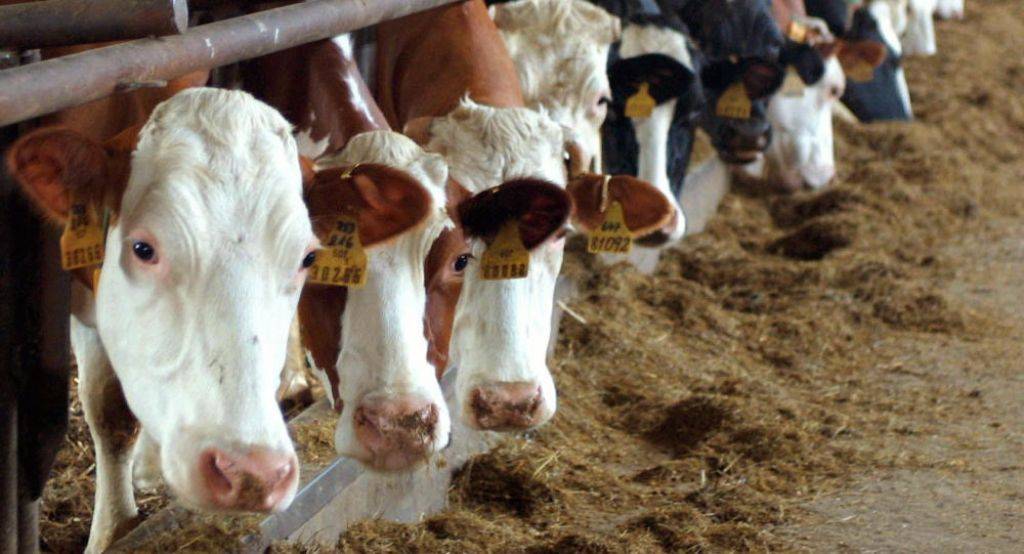
If your milk has residues of antibiotics and high level of aflatoxins and adulteration, it can be harmful for human health. As per research, because of antibiotic residues antibiotic resistant bacteria are found to be transferred to humans.
Autoimmunity, hepatotoxicity, reproductive disorders, Mutagenicity are reported to be caused because of antibiotics. Some specific antibiotics such as Sulphamethazine, Oxytetracycline may be responsible for cancer or carcinogenicity , Gentamicin may cause kidney damage or Nephropathy, bone marrow toxicity may happen due to Chloramphenicol and allergy due to Penicillin.

Improperly stored feeds often contain multiple mycotoxins, and they affect the health of dairy animals. A single large dose of a mycotoxin can cause an acute toxicity in cattle, but in reality the health effects on animals can be seen over time with low levels of toxin intake. Mycotoxins affect dairy cows by reducing feed intake, capacity to utilize the nutrients in feed and reducing immunity. They also cause reproductive problems and skin irritation over a period of time. All of these problems lead to reduction in milk production and losses to the dairy farmer.
How will you know if the milk in your dairy farm is of good quality?
Fat: As per the FSSAI which is the Food Safety and Standards Authority of India, buffalo milk needs to have a minimum of 6% fat. In cow milk fat percentage is expected to be a minimum of 3.2%. The milk from your buffaloes or cows needs to be within these prescribed levels of Fat percentage.
SNF: SNF Stands for Solids Not Fat. SNF includes everything other than water and fat in the milk. It contains solids such as caesin, lactose, vitamins and minerals etc. As per FSSAI, for buffalo milk, the SNF has to be a minimum 9% for and 8.3% for cows across the country.
Bacterial Count: As per international standards the number of bacteria in raw milk should be less than 30,000 per ml.
Somatic Cell Count: Somatic cells are blood cells that fight infection and occur naturally in milk. As per international standards, the somatic cell count in milk should be less than 200000 per ml of milk.
Level of Aflatoxin: Aflatoxins are toxins produced by certain fungi which are generally found in agricultural crops like maize, peanuts, cotton seed and others. They are carcinogenic in nature, which means they can cause cancer. Aflatoxins flow into milk when dairy animals eat fungi infected feed and fodder. According to FSSAI standards, the permissible limit of aflatoxins in milk is 0.5 µg/kg.
Antibiotic Residue: When you inject antibiotics on dairy animals, the residues of antibiotics reach their milk. The FSSAI has recently given a notification on use of antibiotics in the food and milk industry. The notification includes new tolerance limits for 43 antibiotics and veterinary drugs in milk. If you use any of the notified antibiotics then do not supply such milk to the dairy.

What to Do if Milk Is Detected with high Levels of Aflatoxin?
After milk has been detected with greater than 0.5 ppb of aflatoxin in one load, all grain products fed to animals should be removed from the ration immediately and new grain and/or related items replaced in the diet. As cottonseed and corn are the most likely sources of aflatoxin contamination, these grains should be tested to determine their level of aflatoxin. When we separate grains from crops, we must dry them properly. If they remain moist then alflatoxins can be high in such grains. You should store your feed in dry and ventilated places. When you harvest fodder from the field and keep them for a long period on the ground in mounds, then fungus grows in them. Concentrates should not be kept on the floor. They should be kept on wooden slabs.
Whatever toxins are fed to dairy animals reach their liver for detoxification. Hence we need to give them liver tonic to keep the aflatoxin levels low in milk.
How to reduce bacterial count in milk?
If you don’t want your milk to get spoilt quickly after milking then you need to control the bacterial count of your milk. In your farm bacteria can develop inside the farm or can come from outside. Sometimes water is found stagnated in farms. There is a possibility of bacteria growing here. In such places you should create a slope in your farm so that all the water drains out. You should ensure that water does not get stagnated in any part of your farm. In case you have wet floor and at the same time sunlight does not reach such areas then chances of bacterial growth in such places is high. In such cases you should regularly spray the farm with disinfectants such as potassium permanganate. If your drains or gutters are stagnated and not cleaned regularly then bacterial growth can happen here. Clean your drains every week using bleaching powder or phenyl.
To learn more about clean milk production and produce high quality milk in your dairy farm learn from this unique course created by Teplu. Click on the link below:
https://teplu.in/p/clean-milk-production-in-dairy-farming/?affcode=357385_imflcu2u










